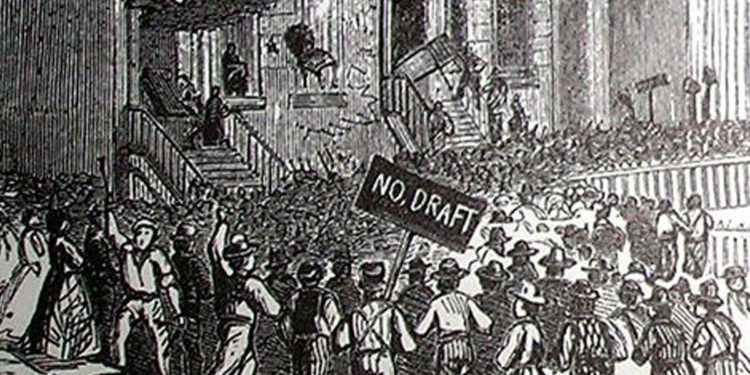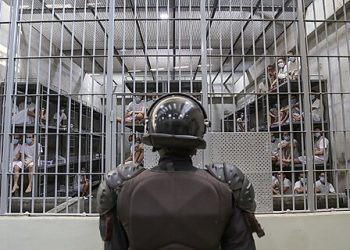In the wake of the American Civil War, one’s status as a veteran could bring significant social and economic benefits. Indeed, the Grand Army of the Republic would become an extremely influential interest group and helped fuel the early creation of an American welfare state for veterans. “Do it for the veterans” became a common plea delivered to politicians of the time.
Yet, it was also the case that actively avoiding military service—what we might call today “draft dodging”—during the war was not an impediment to popularity. Mark Twain was a bona fide “perpetrator” who fled his home state in order to avoid military service. Other celebrated authors of the period—namely Henry Adams and William Dean Howells—conveniently managed to obtain jobs outside the United States during the duration of the war. Novelist Henry James claimed to have suffered a vague nonspecific injury that kept him out of military service.
Moreover, two later US presidents avoided service during the war, namely Chester A. Arthur and Grover Cleveland. Their political careers apparently didn’t suffer much from their lack of military experience.
Perhaps the lack of general disdain for those who never wore a federal uniform can be found in the fact that avoiding enlistment was not exactly unheard of during the war. That’s not to say the regime was incapable of finding hundreds of thousands of willing recruits and volunteers. Many happily signed up.
Yet not all of America’s young men bought into the propaganda.
Riots and Attacks on Draft Agents
The first national draft in the Union began with the militia law of July 1862, which allowed for a draft if states did not meet their quotas of three-year volunteers.1 A draftee could obtain a “commutation” with the payment of $300, or hire a substitute at the same price.
Riots against these impositions soon flared up.
The New York draft riot is the most commonly cited example—because it was so deadly. But scattered draft riots occurred in other cities and towns throughout the US.
Many draft riots were highly targeted, seeking to prevent draft agents from carrying out their duties. In Boston in 1863, for example, working-class Irish Americans—many of them women who feared economic ruin if their wage-earning men were sent off to war—attacked the local draft agents.
Midwesterners were in many cases similarly opposed to conscription.
One example was the riot of November 1862 in Ozaukee County, Wisconsin. The local newspaper—a paper unsympathetic to the rioters—describes how the local draft commissioner and district attorney was assaulted as he tried to conduct a draft in the county:
Mr. Pors then spoke to [the crowd of men and women] in a mild manner, requesting them to stand back a little and they could all see that the draft was conducted properly. At this was a rush forward. Many of them were armed with clubs, many had huge stones in their hands, and others had various implements. The first thing done was to demolish the draft box with a club, and they seized hold of Mr. Pors, and rather trampled upon him, the women vieing [sic] with the men in the brutish assault.
The crowd then proceeded to hurl Pors down the courthouse steps. He fled for his life as rioters hurled heavy stones at his head. The crowd then turned to the courthouse and tore up the enrollment lists.
In Wisconsin, as elsewhere, many also resisted more passively. One historian recounts how “[m]en possessed of robust health suddenly discovered some terrible ailment and had to seek treatment in a different climate. Canada at once became a Mecca for such invalids.”2
Many local governments offered cash bonuses in exchange for enlistment. It was hoped this would furnish enough recruits so that the use of a draft could be avoided altogether. It was known an active draft would incite rage from many voters. The payment of bounties became a significant cost for many state and municipal governments in the face of public resistance to enlistment. Indeed, as the war continued, “bounties and special offerings from the local governments” were increasingly necessary to spur recruiting.
The Chicago area, for example, experienced rising resistance into 1863 and beyond. The initial enthusiasm for war had dissipated and Chicagoans began to feel they had already given enough to the war effort. As Bessie Louis Pierce noted in her history of Chicago, “Reports that Chicago soldiers in the field were refusing to obey orders and had suffered arrest were added proof that many were becoming weary of the war.”3
The local media in Chicago began to protest ongoing efforts at recruitment as well. The Chicago Tribune came out against the draft in 1864, and Pierce writes:
Chicago faced the draft when Lincoln again called for troops [in December 1864]. For the next few weeks defiance was the controlling emotion. Three years before Chicagoans had begged the privilege of going to war; now mass meetings protested what was considered an unfair assessment upon her man power…. as many as three or four hundred men liable to conscription were reported as leaving daily for Canada or “for parts unknown”; aliens, particularly the Irish, eagerly sought papers which ensured freedom from call.4
The undercurrent of resistance took its toll on draft effectiveness. Timothy Perri, for example, has shown that 20 percent of men called by the draft simply never showed up.
The Economics of Substitutes
Whenever Civil War draft policies are mentioned, one invariably hears about substitutes. This was the policy under which a draftee could pay another man to enlist instead. The official price of a substitute was $300, which many have pointed out was equal to a year’s wages in manufacturing.
Not surprisingly, the substitute policy is thus often criticized for not being sufficiently egalitarian, and many have contended only the wealthy could afford this option. In practice, however, the ability to hire a substitute was not unattainable for the middle class.
Pierce mentions that “[m]utual protective associations were organized to buy freedom for draftees.” These associations functioned as a type of “draft insurance” affordable to ordinary, middle-class families. Perri notes fees (i.e., premiums) for draft insurance “ranged from $10 to $50 in Ohio…. Late in the war, firms in Illinois and Indiana sold explicit draft insurance. Draftees who purchased insurance had substitutes hired for them.”5
Moreover, the substitute strategy gave families options they would not otherwise have had. That is, extended families could pool their resources to substitute one son for another if the drafting of a particular high-earning son could lead to financial ruin for the family.
The competition for substitutes also drove up effective wages for military service, which made military service less financially onerous, if nonetheless still fundamentally compulsory. Pierce notes, “As the war wore on prices for these substitutes followed the market…. By summer, 1864, three-year men could demand from $550 to $650, and by spring of the next year $900 was sometimes asked.”6
This likely reflected a general decline of willingness to enlist among young men, meaning potential substitutes could demand higher and higher rewards for an unpopular job. Local governments nonetheless felt the political pressure to provide escapes from the draft, and some jurisdictions budgeted funds “to purchase substitutes for married men.”7
All of this, of course, proved to make the business of recruiting soldiers more complex and more costly to the regime in terms of time and resources. While also costly to ordinary people, the substitute policy did nonetheless provide flexibility that would not otherwise have been available.
Ultimately, though, this patchwork of bounties, commutations, and substitutions was necessary to prevent even more enthusiastic opposition. After all, by the mid-nineteenth century, Americans had been moving in the opposite direction of a national draft: voluntary militias had become the rule in the North, and the US in the 1840s had fought a war staffed only by volunteers.
Thus, many Americans in the 1860s viewed conscription with dismay and an attitude of defiance to a degree that would become largely unknown again until the Vietnam War. Regrettably, however, the Civil War draft would prove to be instrumental in normalizing federal conscription. It succeeded in this endeavor, and in the twentieth century commutations and substitutions were outlawed. A national “selective service” registration system was imposed. By the First World War—and for decades afterward—America had become willing to tolerate a far more draconian and widespread draft than had ever been implemented during the Civil War.
1. The first national military draft in America was actually instituted in the Confederacy in early 1862. Moreover, Confederate conscription—at least on paper—was more draconian and with fewer loopholes than was the case in the rump United States. But in this article we will look only at Northern conscription.
2. John W. Oliver, “Draft Riots in Wisconsin during the Civil War,” Wisconsin Magazine of History 2, no. 3 (March 1919): 334–37, esp. 335.
3. Bessie Louise Pierce, A History of Chicago, vol. 2, From Town to City, 1848–1871 (Chicago: University of Chicago Press, 1940), p. 273.
4. Ibid., p. 274.
5. Timothy J. Perri, “The Evolution of Military Conscription in the United States,” Independent Review 17, no. 3 (Winter 2013): 429–39, 431.
6. Pierce, A History of Chicago, p. 273.
7. Ibid., p. 273.
















